
Vauxhall Astra Sports Tourer (2016-2021) engines, drive and performance
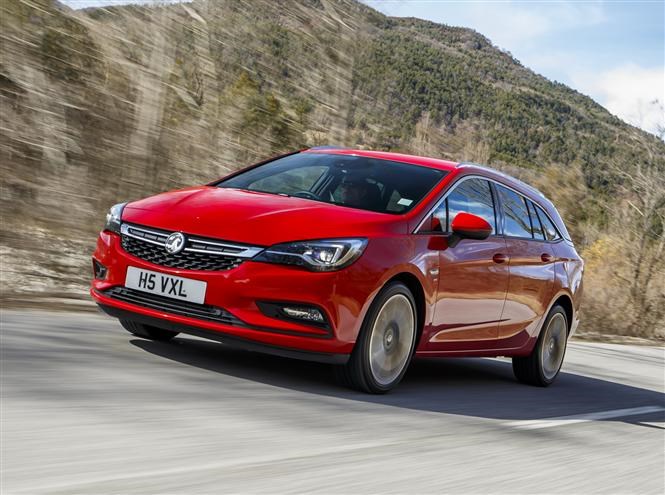
- Seven of the eight-strong engine range are turbos
- Flagship 1.6-litre petrol produces 200hp
- ‘Whisper’ diesels prove to be quiet yet torque-rich
There are no hybrid or electric powerplants for the latest Vauxhall Astra Sports Tourer – instead performance is delivered by a range of petrol and diesel engines, all barring one of which are turbocharged.
Five petrol engines to choose from
Kicking off the Astra Sports Tourer range is a non-turbo 1.4-litre petrol producing just 100hp and130Nm of torque at 4,300rpm, with power sent to the front wheels via a five-speed manual gearbox.
Performance appears to be leisurely with a 115mph top speed and a 13.1-second time to reach 60mph from a standstill. Stick to the smaller 16-inch wheels for a claimed economy of 51.4mpg and CO2 emissions rated at 127g/km.
Offering marginally more performance with superior fuel economy is the turbocharged, three-cylinder 1.0-litre petrol. It produces 105hp and 170Nm of torque from a low 1,800rpm, allowing it to pull away from junctions with greater ease. It’s a quiet, refined engine that feels at home in the Astra – although more power wouldn’t go amiss.
Vauxhall claims a top speed of 121mph, a 0-60mph time of 11.0 seconds and up to 62.8mpg thanks to stop/start and Ecoflex fuel-saving additions. Emissions are as low as 103g/km of CO2.
Two motors in the middle of the range are expected to sell best from the petrol ensemble: 125hp and 150hp editions of the turbocharged 1.4-litre. Both produce 245Nm of torque from 2,000rpm and feature a six-speed manual gearbox as standard – the more powerful engine’s also available with a six-speed automatic.
No prizes for guessing that the 150hp version’s the quicker of the two – 134mph and 0-60mph in 8.2 seconds, versus 127mph and 9.0 seconds – but efficiency’s closely matched at 50.4 to51.4mpg and CO2 emissions rated at 127 to 130g/km, respectively.
Topping the range is the 1.6-litre Turbo with 200hp and 300Nm of torque from just 1,700rpm. It feels brisk rather than sporty, despite claims of 146mph and a hot hatch-like 7.2-second sprint from 0-60mph.
Unsurprisingly, it’s the least efficient of the Sports Tourer line-up, Vauxhall quoting 45.6mpg and142g/km of CO2.
Trio of diesels available
Whichever of the diesels you opt for, your Vauxhall Astra Sports Tourer will have a 1.6-litre engine under its bonnet.
Entry-point is the 110hp version of the ‘Whisper’ diesel which focuses on economy rather than performance. A healthy 300Nm of torque’s on song from 1,750rpm ensuring a 0-60mph time of 10.7 seconds with a top speed of 121mph.
Add on the fuel-miserly Ecoflex package and you’ve got the most efficient of Sports Tourer available, with claims of up to 83.1mpg and CO2 emissions pegged at 89g/km.
Most diesel customers are expected to opt for the more powerful 136hp edition and be willing to sacrifice a modest degree of fuel efficiency for notably improved performance.
There’s a marginal hike in torque – now up to 320Nm at a slightly higher 2,000rpm – which reduces the 0-60mph time to 9.5 seconds; top speed’s recorded at 127mph. Vauxhall still posts an official claim of up to 74.3mpg and CO2 emissions at 101g/km.
Each diesel’s fitted with a six-speed manual gearbox as standard, with the 136hp version optionally available with a six-speed automatic, pulling economy down to 62.8mpg when fitted with 16-inch wheels.
Providing even more pace is the Biturbo version of the diesel, producing 160hp and 350Nm of torque from just 1,500rpm.
It’s a responsive unit, with negligible turbo lag, offering strong performance without having a woeful impact on efficiency. It’ll reach 137mph, completing the 0-60mph dash in 8.4 seconds, yet still has a claimed average of 68.9mpg and emissions of 109g/km of CO2.
- Agility improved by lighter underpinnings
- Better to drive than any previous Astra estate
- Few rivals can match its ride/handling balance
Following the lead of its hatchback sibling, the Vauxhall Astra Sports Tourer’s ride and handling characteristics have been honed on Britain’s demanding roads, with the goal being to make it enjoyable to drive.
Just a few miles behind the wheel confirms how agile the latest Sports Tourer is compared with its predecessor, aided by a significant weight-saving from switching to all-new, lighter underpinnings.
Keener drivers will appreciate the efforts Vauxhall has gone to, producing an estate that’s very nearly as good to drive as the Ford Focus Estate remains. Similarly, the Volkswagen Golf Estate has the edge on comfort over the Astra – but only just. It’s a great all-rounder.
Criticisms of the handling set-up are relatively minor. While grip through a series of bends impresses, in many Astras the power steering system feels over-assisted, being very light in its action as a result. This can be mitigated with SRi versions, complete with a ‘Sport’ button on the centre console. Switching it on adds a greater degree of weight to the steering set-up.
In most conditions the Astra Sports Tourer’s ride quality is adept at maintaining a comfortable equilibrium for passengers, but it’s biased towards firmness regardless of the trim level. You’ll have fewer passenger complaints as you ply motorways in the Vauxhall than traversing undulating country lanes.
As with many rivals, a suite of electronic aids are available to bolster the handling finesse, pleasingly with little intrusiveness when they’re called upon.
Reining in the Sports Tourer through tighter corners is Torque Vectoring by Brakes, reducing the speed of the ‘inside’ wheels through bends to help you keep a line close to that which you intended, as well as allowing you to get back on the power sooner as you exit thanks to improved stability.
Arguably Vauxhall’s greatest achievement with the Sports Tourer is that it feels barely any different to drive than its Astra Hatchback counterpart, despite the additional weight of the extra metalwork at the back end.


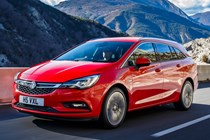
.jpg)
.jpg)
.jpg)
.jpg)
.jpg)
.jpg)
.jpg)
.jpg)
.jpg)
.jpg)
.jpg)
.jpg)
.jpg)
.jpg)
.jpg)
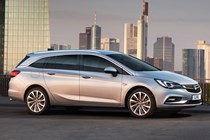
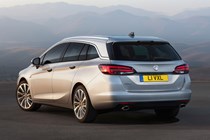
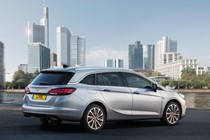

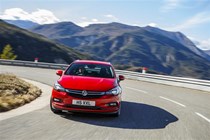
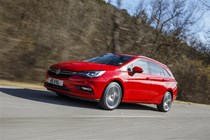
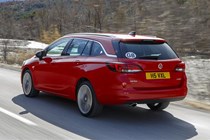
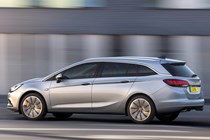
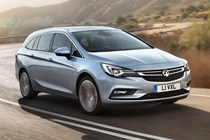
.jpg)
.jpg)
.jpg)
.jpg)
.jpg)
.jpg)
.jpg)
.jpg)
.jpg)
.jpg)
.jpg)
.jpg)
.jpg)
.jpg)
.jpg)
.jpg)
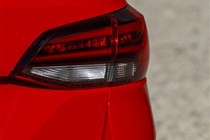
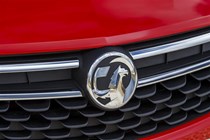
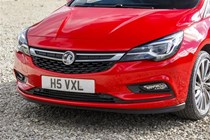
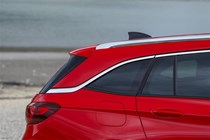
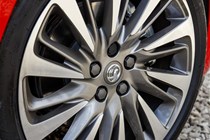
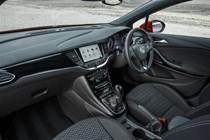
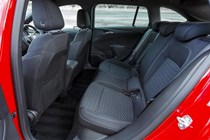
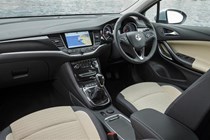
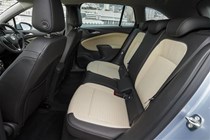
.jpg)
.jpg)
.jpg)
.jpg)
.jpg)
.jpg)
.jpg)
.jpg)
.jpg)
.jpg)
.jpg)
.jpg)
.jpg)
.jpg)
.jpg)
.jpg)
.jpg)
.jpg)
.jpg)
.jpg)
.jpg)
.jpg)
.jpg)
.jpg)
.jpg)
.jpg)
.jpg)
.jpg)
.jpg)
.jpg)
.jpg)
.jpg)
.jpg)
.jpg)
.jpg)
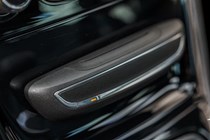

.jpg)
.jpg)
.jpg)
.jpg)
.jpg)
.jpg)
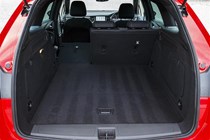
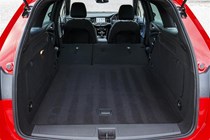
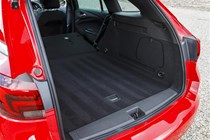
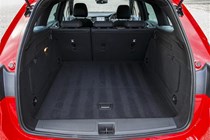
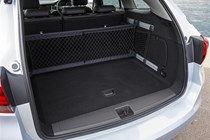
.jpg)
.jpg)
.jpg)
.jpg)
.jpg)


.jpg?quality=50)
.jpg?quality=50)
.jpg?quality=50)
.jpg?quality=50)
.jpg?quality=50)
.jpg?quality=50)
.jpg?quality=50)
.jpg?quality=50)
.jpg?quality=50)
.jpg?quality=50)
.jpg?quality=50)
.jpg?quality=50)
.jpg?quality=50)
.jpg?quality=50)
.jpg?quality=50)









.jpg?quality=50)
.jpg?quality=50)
.jpg?quality=50)
.jpg?quality=50)
.jpg?quality=50)
.jpg?quality=50)
.jpg?quality=50)
.jpg?quality=50)
.jpg?quality=50)
.jpg?quality=50)
.jpg?quality=50)
.jpg?quality=50)
.jpg?quality=50)
.jpg?quality=50)
.jpg?quality=50)
.jpg?quality=50)









.jpg?quality=50)
.jpg?quality=50)
.jpg?quality=50)
.jpg?quality=50)
.jpg?quality=50)
.jpg?quality=50)
.jpg?quality=50)
.jpg?quality=50)
.jpg?quality=50)
.jpg?quality=50)
.jpg?quality=50)
.jpg?quality=50)
.jpg?quality=50)
.jpg?quality=50)
.jpg?quality=50)
.jpg?quality=50)
.jpg?quality=50)
.jpg?quality=50)
.jpg?quality=50)
.jpg?quality=50)
.jpg?quality=50)
.jpg?quality=50)
.jpg?quality=50)
.jpg?quality=50)
.jpg?quality=50)
.jpg?quality=50)
.jpg?quality=50)
.jpg?quality=50)
.jpg?quality=50)
.jpg?quality=50)
.jpg?quality=50)
.jpg?quality=50)
.jpg?quality=50)
.jpg?quality=50)
.jpg?quality=50)


.jpg?quality=50)
.jpg?quality=50)
.jpg?quality=50)
.jpg?quality=50)
.jpg?quality=50)
.jpg?quality=50)





.jpg?quality=50)
.jpg?quality=50)
.jpg?quality=50)
.jpg?quality=50)
.jpg?quality=50)
